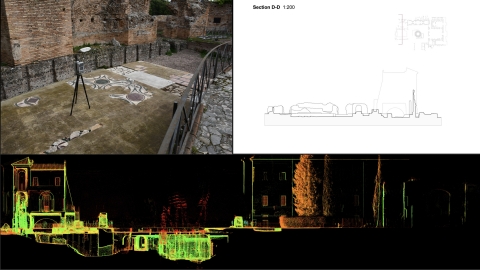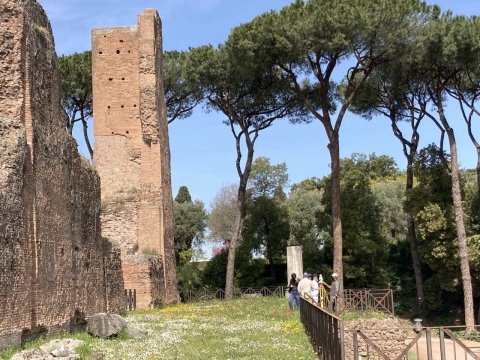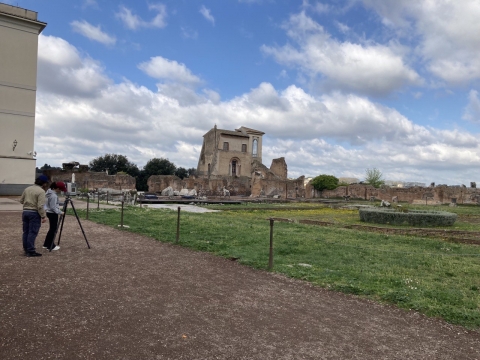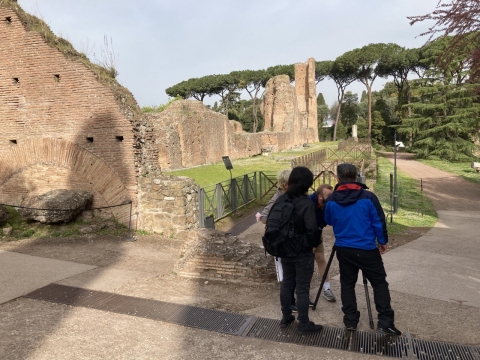Stages of the Emperor: Organization, Communication and Perception of Power
In the last thirty years, thanks to Geographic Information Systems, it has been possible to create archaeological maps and databases capable of managing huge amounts of data that can be obtained from every available source of information (archaeological, literary, iconographic sources, etc.). Landscape archeology has therefore been able to use these tools to propose reconstructions of urban and agricultural landscapes articulated by phases.
The possibilities offered by the three-dimensional architectural survey, through photogrammetry and point clouds, and vector and three-dimensional drawing software have made it possible to propose increasingly refined architectural reconstructions of important contexts of antiquity. The Roman imperial machine, starting from the Augustan reform and up to late antiquity, is one of the systems of power for which we have a greater quantity of direct evidence available: the tales of the ancients.
Furthermore, one of the main sites of application of this power, the imperial palaces of the Palatine, is now extensively excavated and documented and this has allowed the realization of some studies on its uses and on the messages that were at the basis of the design of some of its parts. Despite this extraordinary amount of information available, no attempt has yet been made to systematize the various data.
The goal of this project is to create phase plans and reconstructions of the different phases of the buildings to be able to analyze them in a complementary way to the information relating to the reforms of the organization of the imperial court and, more generically, of power. Thus, it will be possible to understand whether a trace of the administrative and political reforms is legible in the design of the different parts of the buildings, it will be possible to analyze the communication choices evidenced by the architecture and furnishings and it will finally be possible to analyze the perception that the ancients had of it.
SEED PNR 2022










